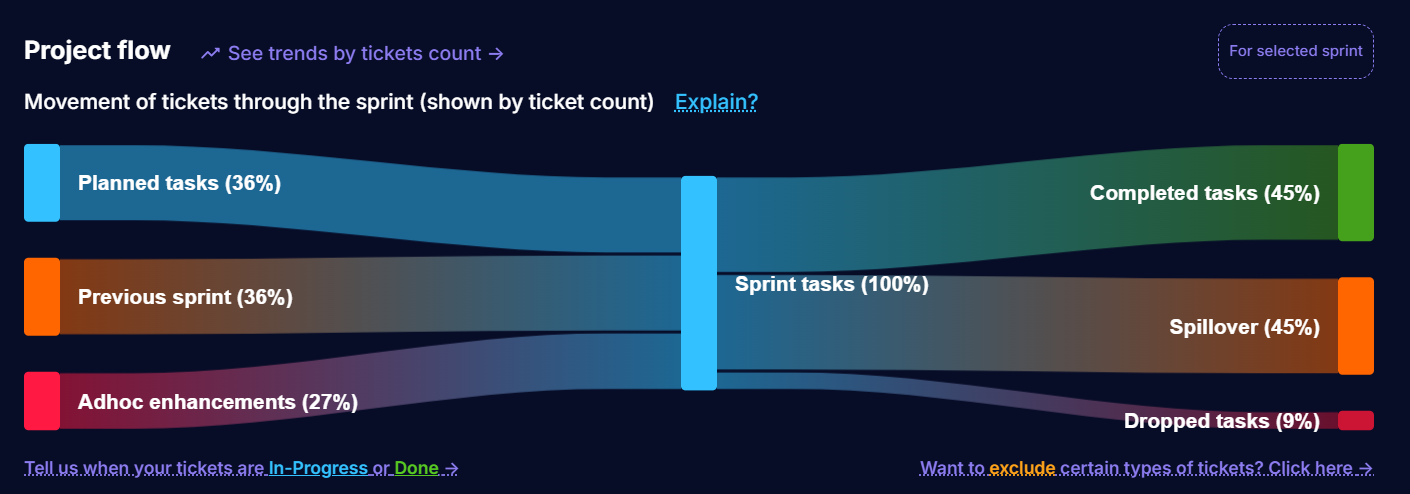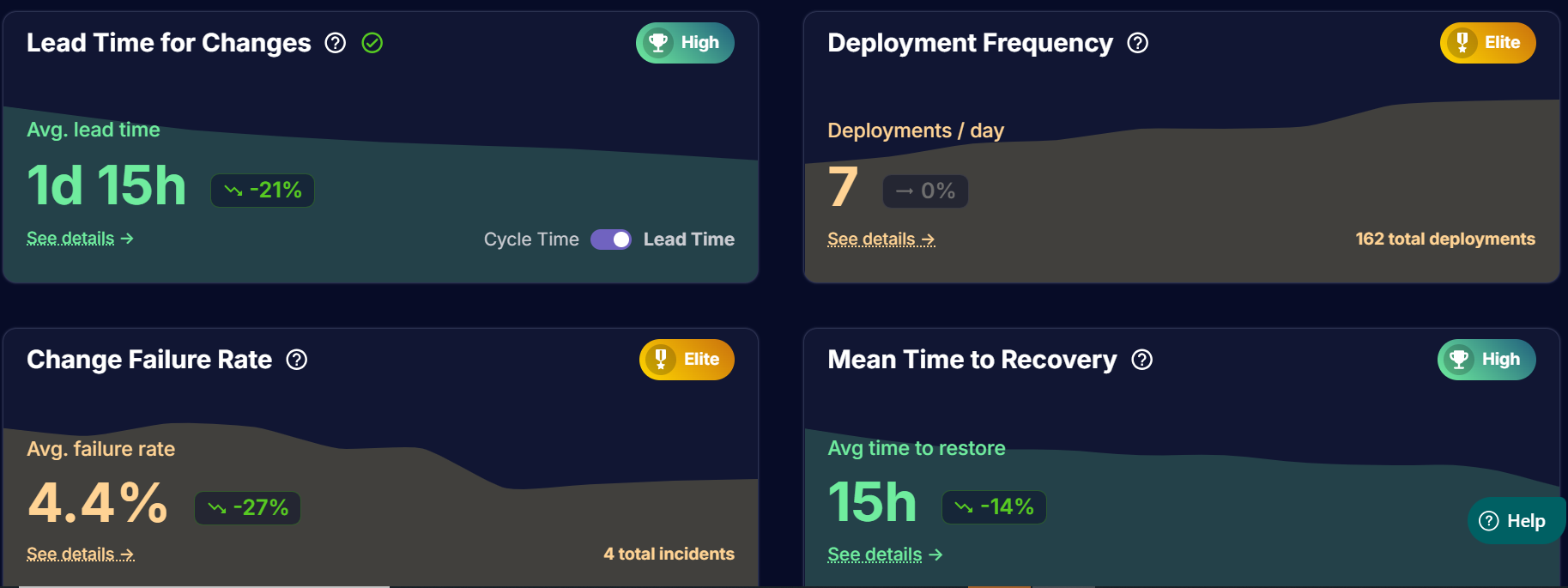15 Essential Tips for First-Time Technical Project Managers in 2025
 Rajni Rethesh
Rajni RetheshTable of contents
- How to Succeed as a New Technical Project Manager: 15 Must-Know Tips
- 1. Understand the Technology (At Least on a Conceptual Level)
- 2. Know Your Team's Strengths and Weaknesses
- 3. Become a Communication Ninja
- 4. Use the Right Project Management Tools
- 5. Don’t Skip the Metrics
- 6. Shield Your Developers from Scope Creep
- 7. Plan with Buffers
- 8. Run Stand-ups That Don’t Suck
- 9. Celebrate Small Wins
- 10. Create and Maintain a Risk Log
- 11. Document Everything
- 12. Learn to Prioritize Like a Pro
- 13. Don’t Neglect Soft Skills
- 14. Never Forget to Retrospect
- 15. Not Using a Tool Like Middleware to Track Sprint Efficiency
- Final Thoughts
- FAQs

So you’ve just stepped into your first role as a Technical Project Manager (TPM)? Congratulations! You’re now the bridge between developers, stakeholders, deadlines, and sometimes, pure chaos. This job is part translator, part coach, part firefighter — and it can be overwhelming if you're not prepared.
Here’s your survival kit: 15 essential tips that every first-time TPM needs to know to lead their team without losing their sanity.
Also read: Top 10 Challenges Faced by Technical Project Managers and How to Overcome Them
Want to make your life easier and your projects faster? Try Middleware today. Get clear metrics, eliminate bottlenecks, and deliver software like a pro.
How to Succeed as a New Technical Project Manager: 15 Must-Know Tips
1. Understand the Technology (At Least on a Conceptual Level)
You don’t have to write production-grade code, but you must understand what your team is building. Know the basics of APIs, microservices, front-end vs. back-end, cloud vs. on-prem. This makes you credible with engineers and effective with stakeholders.
2. Know Your Team's Strengths and Weaknesses

Every developer has a superpower. One may excel at debugging legacy code, another at rapid prototyping. Get to know what makes each team member tick—it'll help you assign work smarter and avoid burning people out.
3. Become a Communication Ninja
A huge part of your job is translating tech-speak to stakeholder-speak. You’ll also need to break down vague business goals into actionable tasks for devs. Clear, concise, and jargon-appropriate communication is a TPM superpower.
4. Use the Right Project Management Tools

Stop using Excel for sprint planning. Seriously. Tools like Jira, Asana, or ClickUp are designed for agile project management. Pick one that suits your team’s workflow and master it.
And if you’re looking for deeper visibility beyond just task tracking, try Middleware. It helps you understand your development process in real-time—tracking Cycle Time, Lead Time, PR review delays, and delivery patterns. Middleware doesn't just help manage projects, it helps optimize them for speed, quality, and clarity. Getting Started with Middleware Open Source.
Also read: Top 20 Project Management Tools & Techniques for Project Managers
5. Don’t Skip the Metrics
Lead Time, Cycle Time, Deployment Frequency, WIP Limits — they aren't vanity metrics. They give you insights into team health, bottlenecks, and delivery speed. Track them religiously. Check What are Dora Metrics? - Master DORA Metrics to Master World Class Software Delivery Processes
6. Shield Your Developers from Scope Creep
Stakeholders love changing the scope last minute. Your job? Protect the sprint. Be the buffer. Keep scope changes for the next sprint and guard your devs' focus time like it’s treasure.
7. Plan with Buffers
Murphy’s Law is real in tech. A dependency might break, a team member might fall sick, or QA might discover a nasty bug. Always build in buffer time into your timelines.
8. Run Stand-ups That Don’t Suck
Keep daily stand-ups short, focused, and engaging. Don’t let them become status updates for your sake. Instead, use them to surface blockers and align quickly.
9. Celebrate Small Wins
Shipping a feature? Fixing a nasty bug? Cracking a critical issue? Celebrate it—even if it’s just a shout-out on Slack. Recognition is fuel for motivation.
10. Create and Maintain a Risk Log

Think of it as a fire drill for your project. What could go wrong? Who do you escalate to? What's Plan B? This makes you look like a genius when something does go wrong.
11. Document Everything

No, it’s not sexy. But future-you will thank past-you for documenting why certain tech decisions were made or what caused that mysterious outage. Learn The Importance of Documentation in DevOps: 2024 Dora Report
12. Learn to Prioritize Like a Pro
Not everything is a P1 blocker. Learn to balance technical priorities with business urgency. Push back when necessary and help the team focus on what moves the needle.
13. Don’t Neglect Soft Skills
Technical know-how gets your foot in the door. Emotional intelligence, conflict resolution, and active listening will keep it open. Invest in these just as much.
14. Never Forget to Retrospect
Every sprint is a chance to learn. What worked? What didn’t? Retrospectives aren’t optional — they’re where teams evolve. Create a safe space for honest feedback. Learn How to Leverage Sprint Retrospectives to Drive Software Team’s Growth?
15. Not Using a Tool Like Middleware to Track Sprint Efficiency
Big mistake. Middleware gives you deep visibility into your team’s delivery pipeline. You get real-time tracking of Cycle Time, Lead Time, PR bottlenecks, review delays, and more. Without tools like this, you're flying blind. Learn more about Middleware: Open-Source DORA Metrics for a Smoother Engineering Flow
Final Thoughts
Being a first-time Technical Project Manager can feel like juggling flaming swords on a tightrope. But with the right habits, tools, and mindset, you can not only survive but thrive.
Want to make your life easier and your projects faster? Try Middleware today. Get clear metrics, eliminate bottlenecks, and deliver software like a pro.
👉 Book a demo with us and make project chaos a thing of the past!
FAQs
1. How can a first-time TPM manage stakeholder expectations effectively?
Start by setting clear, realistic timelines and avoid overpromising. Communicate frequently with stakeholders, share progress updates, and educate them on technical constraints. Transparency is key to building trust.
2. What should a first-time TPM do when their project is off-track?
Don’t panic—diagnose. Use metrics to identify where things are going wrong (delays in dev, review, or testing). Reassess your plan, communicate openly with stakeholders, and bring in the team to brainstorm solutions. Tools like MiddlewareHQ can help pinpoint bottlenecks fast.
Subscribe to my newsletter
Read articles from Rajni Rethesh directly inside your inbox. Subscribe to the newsletter, and don't miss out.
Written by

Rajni Rethesh
Rajni Rethesh
I'm a senior technical content writer with a knack for writing just about anything, but right now, I'm all about technical writing. I've been cranking out IT articles for the past decade, so I know my stuff. When I'm not geeking out over tech, you can catch me turning everyday folks into fictional characters or getting lost in a good book in my little fantasy bubble.







